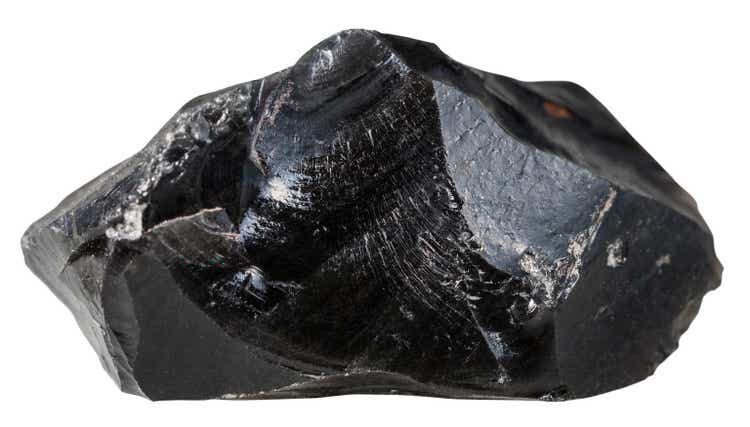VvoeVale/iStock via Getty Images
Obsidian Energy (NYSE:OBE) addressed its near-term debt maturities through a debt-refinancing that included high-interest rate 11.95% unsecured notes. The interest rate on those notes is a bit eye-opening, but the overall interest cost for Obsidian should only be US$1 per BOE next year.
At current strip prices, Obsidian should be able to end up with a net cash position by the end of 2023, not including potential outlays for share repurchases and/or dividends.
This report uses an exchange rate of US$1.00 to CAD$1.28.
Debt Refinancing
Obsidian has successfully addressed its near-term debt maturities with its recent unsecured note offering and new credit facilities. Previously most of Obsidian’s debt matured at the end of November 2022, except for its small PROP limited recourse loan which was due at the end of December 2022.
This comes at a high cost though, with its US$100 million in new notes due July 2027 carrying a hefty 11.95% interest rate. These notes are also being issued at 98% of par, so Obsidian is receiving US$98 million in gross proceeds before financing costs.
Obsidian is also entering into new credit facilities with US$160 million in availability. This consists of US$137 million in revolving syndicated credit facilities, with an initial revolving period ending in July 2023 and an initial term out period ending in July 2024. As well, there is up to US$23 million in term loan availability, and the term loan matures in December 2022.
This does illustrate the value in having no near-term debt maturities. If Obsidian’s old debt had matured at the end of 2023 instead, it would have been on track to pay it all off via cash flow. This would have saved Obsidian Energy US$60 million in interest costs (over the lifetime of the notes).
Updated 2022 Outlook
Obsidian now expects to average around 32,000 BOEPD in production during 2022 after increasing its capex budget. The increase in the capex budget for 2022 will mainly impact 2023 production.
Current strip prices are around US$98 WTI oil now. At that price, I’d expect Obsidian to generate US$701 million in revenues after hedges.
|
Type |
Units |
$ USD/Unit |
$ Million USD |
|
Light Oil And NGLs [BBLs] |
5,429,375 |
$83.00 |
$451 |
|
Heavy Oil [BBLs] |
2,308,625 |
$67.00 |
$155 |
|
Natural Gas [MCF] |
23,579,000 |
$5.40 |
$127 |
|
Hedge Value |
-$32 |
||
|
Total Revenue |
$701 |
Obsidian is thus projected to generate US$425 million EBITDAX in 2022 at current strip prices.
|
$ Million USD |
|
|
Revenue |
$701 |
|
Less: Operating Expense |
$122 |
|
Less: Transportation |
$27 |
|
Less: Royalties |
$112 |
|
Less: Cash G&A |
$15 |
|
EBITDAX |
$425 |
After capital expenditures, decommissioning expenses, interest and financing costs, Obsidian may be able to reduce its net debt by US$150 million in 2022. This would leave it with US$173 million in net debt at the end of 2022.
Updated 2023 Outlook
Obsidian now expects to average approximately 37,500 BOEPD in production during 2023. This would allow it to generate US$735 million in revenues at current 2023 strip of $86 WTI oil.
|
Type |
Units |
$ USD/Unit |
$ Million USD |
|
Light Oil And NGLs [BBLs] |
6,090,025 |
$72.00 |
$438 |
|
Heavy Oil [BBLs] |
3,358,000 |
$55.00 |
$185 |
|
Natural Gas [MCF] |
25,477,000 |
$4.40 |
$112 |
|
Total Revenue |
$735 |
Obsidian’s projected EBITDAX for 2023 is US$438 million at $86 WTI oil.
|
$ Million USD |
|
|
Revenue |
$735 |
|
Less: Operating Expense |
$138 |
|
Less: Transportation |
$32 |
|
Less: Royalties |
$112 |
|
Less: Cash G&A |
$15 |
|
EBITDAX |
$438 |
Obsidian is expecting approximately US$207 million in capital expenditures currently for. After interest costs and decommissioning expenditures, it may be able to generate approximately US$208 million in positive cash flow in 2023.
This would give it around US$35 million in net cash at the end of 2023, before any potential outlays for share repurchases and/or dividends.
Conclusion
Obsidian Energy has taken care of the near-term debt maturity issue that has been hanging over it for years. It paid a high interest rate on its new unsecured notes, but the overall impact of interest costs on its cash flow should be relatively modest at around US$1 per BOE in 2023.
At strip prices, Obsidian should be able to reach a net cash position by late 2023, before the impact of share repurchases and/or dividends. In a long-term (after 2023) $75 WTI oil scenario, Obsidian’s estimated value is US$12 to US$14 per share. With its near-term debt maturities taken care of, Obsidian is better able to make longer-term plans and more fully realize its potential value.


Be the first to comment